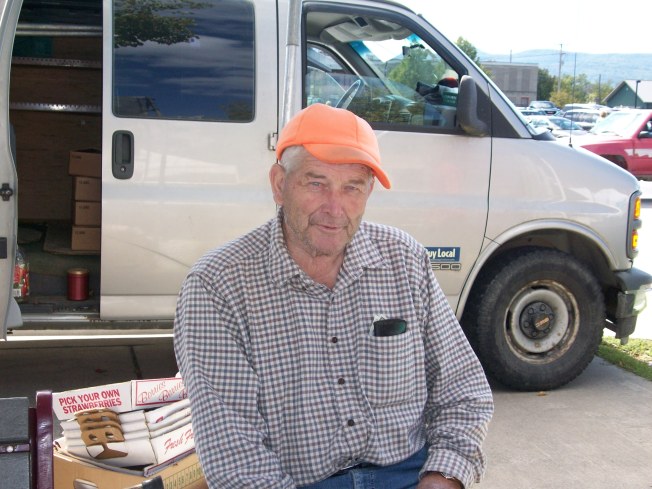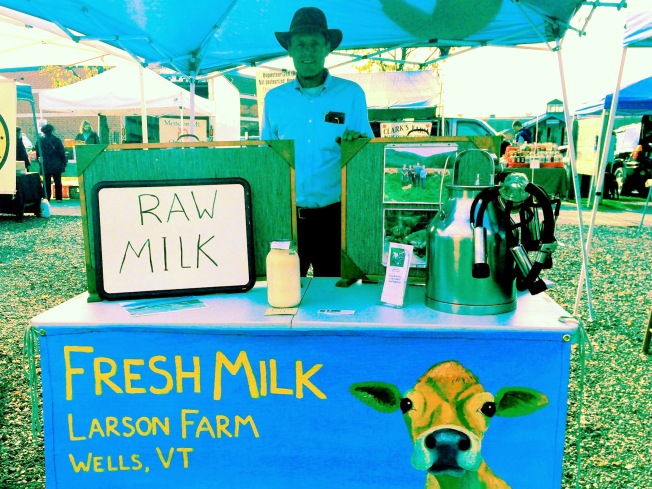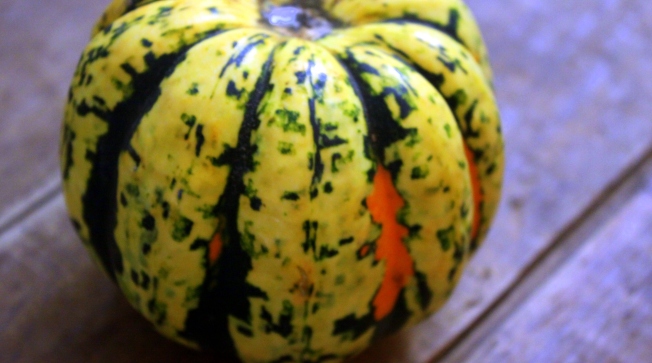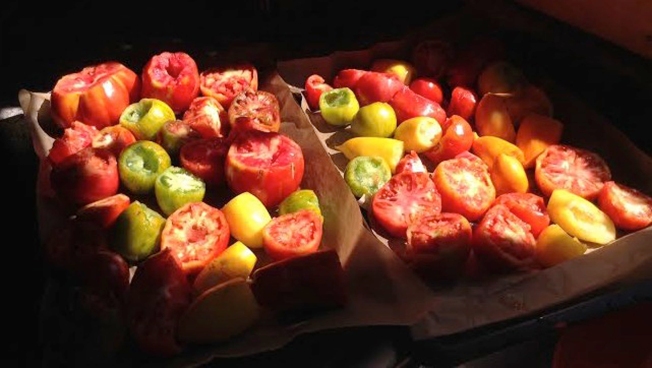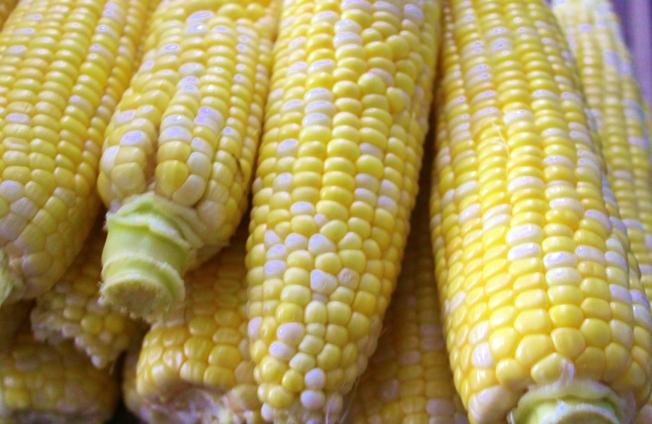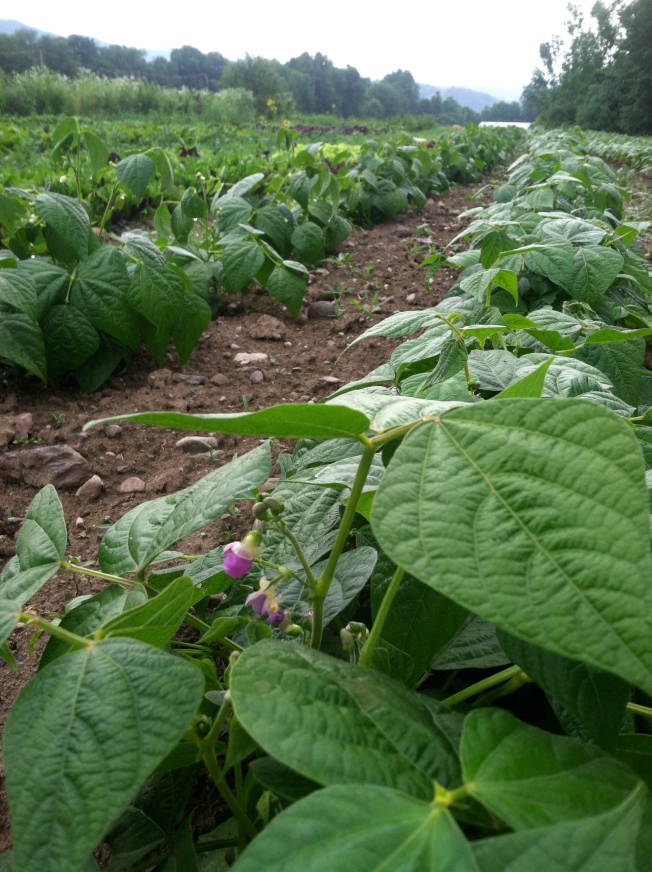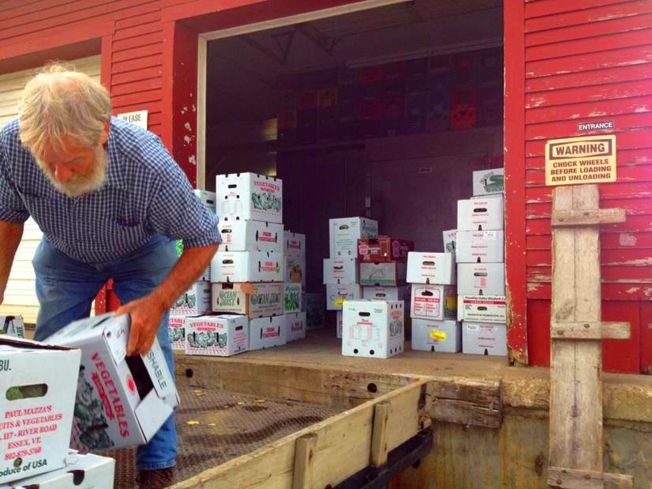By Bill Clark
At last! After five years of trying and almost making it, this season RAFFL’s Glean Team has collected over 22,000 pounds (Eleven tons… and counting!) of fresh fruits and vegetables. These nutritious foods from area farms have been distributed to 19 different places around the county providing food to 2,500 people in need.
This special activity all started on a damp, cool April morning in 2009. We’ve been doing Farmers Markets for many years. Our biggest market day is Saturday in Rutland City. Occasionally, leftovers at day’s end were left at a food pantry. However, not many are open on Saturdays and most don’t have much refrigeration for fresh veggies and fruit. So when we received a letter from a local agency that cares for women and children letting us know that it would mean so much to have fresh veggies for the growing children in need we didn’t need to think too hard about it. Their simple request was that we grow an extra row of food, just for them. This request was so simple, we knew we would say yes!
We farmers have untold problems every day; weather extremes, high cost of fuel, equipment, taxes, pests and more. Growing an extra row sounded like the easiest thing that we’d ever been asked to do. We emphatically said “Yes!” In fact, we’ve raised an acre of crops each year since 2009 specifically for donation as a result of that request.
It’s one thing to grow the extra food. Harvest and distribution are another matter. Fortunately, in 2004 a group of concerned farmers, consumers and organizations came together to try to turn declining agriculture around into a new direction. They organized into a group known as the “Rutland Area Farm and Food Link” (RAFFL). Produce had to get from the farmers to the food shelves. RAFFL had the means, the vision, and the willpower to make it happen.
Meadow Squier was the first person to work for RAFFL’s Glean Team. As a summer internship, she coordinated and handled the project. She picked up, weighed and catalogued all produce from the Saturday Farmers Market. With the generosity of Thomas Dairy, the food was stored until it would be delivered on Monday. Produce was gathered from the Poultney Market on Thursday as well. Green Mountain College has been a strong partner providing students to help out, cold storage, and use of their kitchen to process food that was frozen for later distribution during the winter.
We started taking in produce in early June and by November had acquired 10,000 pounds during a wet, cold summer with a very poor growing season. Challenging circumstances to begin with but amazing what was accomplished for very little money. No farmers had to buy or rent more land or equipment. They didn’t need to pay for extra labor. Thomas Dairy didn’t have to add more coolers. All the components of this project were here right under our noses all the time. It just needed a committed organization to make all of the connections.
As RAFFL celebrates its tenth anniversary of bringing Rutland County agriculture and consumers together, it is interesting to look back and see how it got its start. For years Rutland County had been a major dairy county. However, since the 1960’s many of its hill farms were slowly being bought up by flatlanders. And so it was on an April morning in 2004 my wife, Sue, needed some things in Rutland. I just happened to notice in the paper that UVM Extension had scheduled a meeting in their conference room where someone would be talking about how to best shop at a farmers market. Being that we were large market vendors for over 25 years at that point, I was curious about what might be said, so I went to the meeting. It didn’t turn out to be what I thought it would be. Rather, over twenty people were there, most of whom I didn’t know. It turned out to be a discussion about Rutland’s declining agriculture and what, if anything, could be done to change that. Folks there represented a variety of entities in Rutland County as well as market growers and maybe a few consumers. There was representation from the Rutland Regional Planning Commission, the Vermont Land Trust, Poultney-Mettowee Natural Resource Conservation District, Green Mountain College, UVM Extension and probably others.
After two hours of discussion, the idea was born to form a new organization, RAFFL. Many lofty ideas were put forth about what it might accomplish. Some might have been pie in the sky. After all, it was starting out with no money. No money, but plenty of determination. (It seems that’s the one element in Rutland that gets things done.) A board of directors was set up, Rutland Regional Planning Commission secured a grant, and RAFFL was born. In Tara Kelly’s hands as the director, this organization has been making a difference.
There is not room here to tell RAFFL’s amazing story of how it evolved over the past ten years. Suffice to say, that because of RAFFL, Rutland county has a new, dynamic, growing agriculture that has expanded farmers markets in their scope including the start-up of the 26 week winter farmers market in Rutland which is the largest in the state. RAFFL has been expanding opportunities and education for farmers, especially the young ones just getting started. All while operating innovative programs that connect this community to its farmers and vice versa.
Each year the Glean Team effort has grown with many local farmers donating their high quality produce. This season’s eleven plus tons of fresh grown, top quality, local fruits and veggies are making a difference in so many people’s lives who otherwise could not afford it. We are proud to be a part of this effort. In Wells, Our Neighbors Table (our local food pantry) is a good example of a food pantry set up and committed to providing this fresh produce. They have both refrigerator and freezer storage. They do an excellent job.
With the growing world food shortage and in the US the continuing drought in California, we in Vermont need to rapidly expand growing our own food. As I look back at the Glean Team project, it shows how much can be accomplished when people work together with very little money involved. It is a shadow of the same kind of effort that every year goes into the Gift of Life Marathon. Some people still call Rutland the “Rut”. Well, if Rutland is a “Rut” than it’s an awful good “Rut” to be in! The spirit of Rutland is strong!
Bill and Sue Clark operate Clark Farm and Maple Country Kitchen in Pawlet, VT. They have been Rutland Downtown Market vendors for the past 38 years. Bill is also past president of the Vermont Farmers Market. He can be reached at 325-3203 or by FAX 325-2291.
